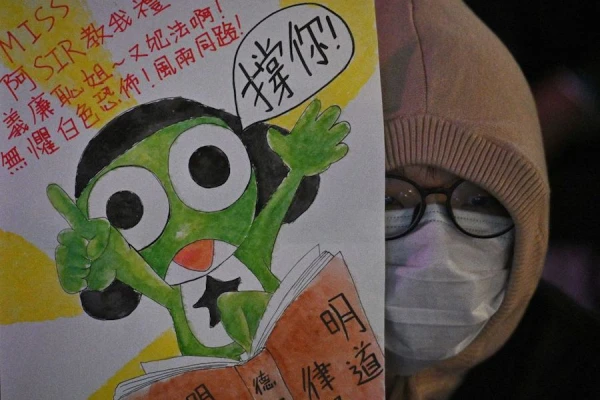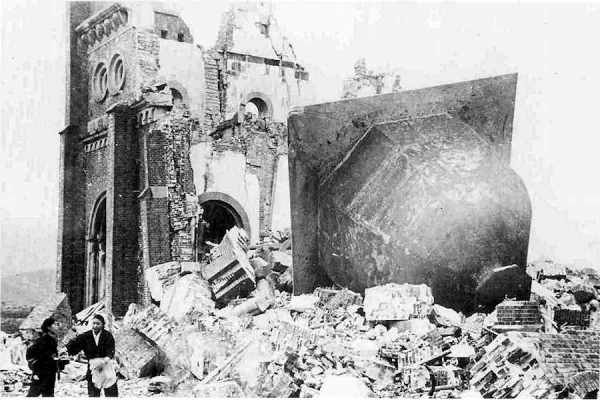
Hong Kong, China, Jan 3, 2020 / 12:35 pm (CNA).- Burmese Cardinal Muang Bo has signed an open letter condemning police brutality in Hong Kong over the Christmas holidays.
“We have been horrified to see reports of police firing teargas, pepper-spray and rubber bullets at close-range at shoppers, peaceful protesters and innocent by-standers on Christmas Eve, Christmas Day, Boxing Day and again on Saturday 28 December,” said the letter.
The letter, dated Dec. 31, was addressed to Hong Kong’s Chief Executive, Carrie Lam, and was signed by more than 40 prominent political leaders from around the world, in addition to Cardinal Bo, who is head of the Federation of Asian Bishops’ Conferences.
“We are profoundly disturbed by scenes of children and young people being severely beaten, and of rubber bullets being fired into people’s faces, acts which any ballistics expert would confirm presents a serious risk of injury or death, and which therefore is a serious violation of international standards,” the letter said.
The letter called on Lam and the Hong Kong police force to use of “only proportionate measures.”
The signatories also asked for an independent inquiry into police brutality and the release of all “unjustly detained” protestors who were engaging in peaceful protests; “meaningful dialogue with the recently elected district councilors” and additional political reform.
The letter also noted an offer of assistance from the international community for “encouraging or facilitating a process of mediation and reconciliation.”
“We appeal to you to use your authority and exercise your responsibility to seek genuine ways forward out of this crisis by addressing the grievances of Hong Kong people, bringing the Hong Kong Police Force under control, ensuring accountability and an end to impunity for serious violations of human rights, and beginning a process of democratic political reform,” the letter added.
“It is clear to us that these steps offer some hope of a way forward out of the current crisis.”
Without efforts to end police brutality, the letter warns that there will be “further human suffering, fear, violence and instability” as well as “the tragic decline of your great city.”
It would be a “tragedy,” the letter said, if Hong Kong were to gain a “reputation for repression.”
Bo is not the first Catholic leader to raise concerns about police tactics in Hong Kong.
Hong Kong Auxiliary Bishop Joseph Ha Chi-shing, a supporter of the protest movement, called for an independent commission to look into police tactics, in an Oct. 21 Facebook post.
“I ask the Lord to move the government of the special administrative region to respond to the public opinion, and set up an ‘Independent Commission of inquiry’ so that the community can begin with the truth and begin the path of real reconciliation,” Ha Chi-shing wrote.
“During a gathering last Saturday, I am so moved by our young faithful who expressed their views on our Church’s participation in the society. Again, I am convinced that one of the necessary ways to resolve the current difficult situation in Hong Kong is the setting up of an ‘independent commission of inquiry,’” he added.
In October, the legislature of Hong Kong completed the process of officially withdrawing a controversial extradition bill, which would have allowed the Chinese government to extradite alleged criminals from Hong Kong to the mainland to stand trial.
The impetus for the bill was a case involving a young Hong Kong man whom Taiwan requested be extradited for an alleged murder. Hong Kong previously has no formal extradition agreements with mainland China or Taiwan.
Christians and advocates widely opposed the bill, fearing that the Chinese government, which already seeks to control and suppress Chistianity on the mainland, would use it to further tighten its grip on free exercise of religion in Hong Kong.
Hong Kong is a special administrative region of China. Hong Kongers enjoy freedom of worship and evangelization, while in mainland China, by contrast, there is a long history of persecution for Christians who run afoul of the government.
An estimated 1 million protesters turned out at the first major demonstration June 6. Catholics have played a major role in the protests, which continued after the extradition bill was revoked, with protestors largely calling for Lam’s resignation, more open elections in the region, and an investigation into police brutality allegations.
A former Anglican bishop is another signatory of the Dec. 31 letter, as well as John Bercow, the former speaker of the House of Commons in the United Kingdom, along with political leaders from across the globe.
Pope Francis has not yet commented on the situation in Hong Kong. On his traditional Christmas Day Urbi et Orbi blessing, Pope Francis made headlines for his omission of Hong Kong as a place of unrest in need of prayers.
In that blessing, Francis mentioned Venezuela, Ukraine, the Democratic Republic of the Congo, and Syria, among other nations.
 […]
[…]







Leave a Reply